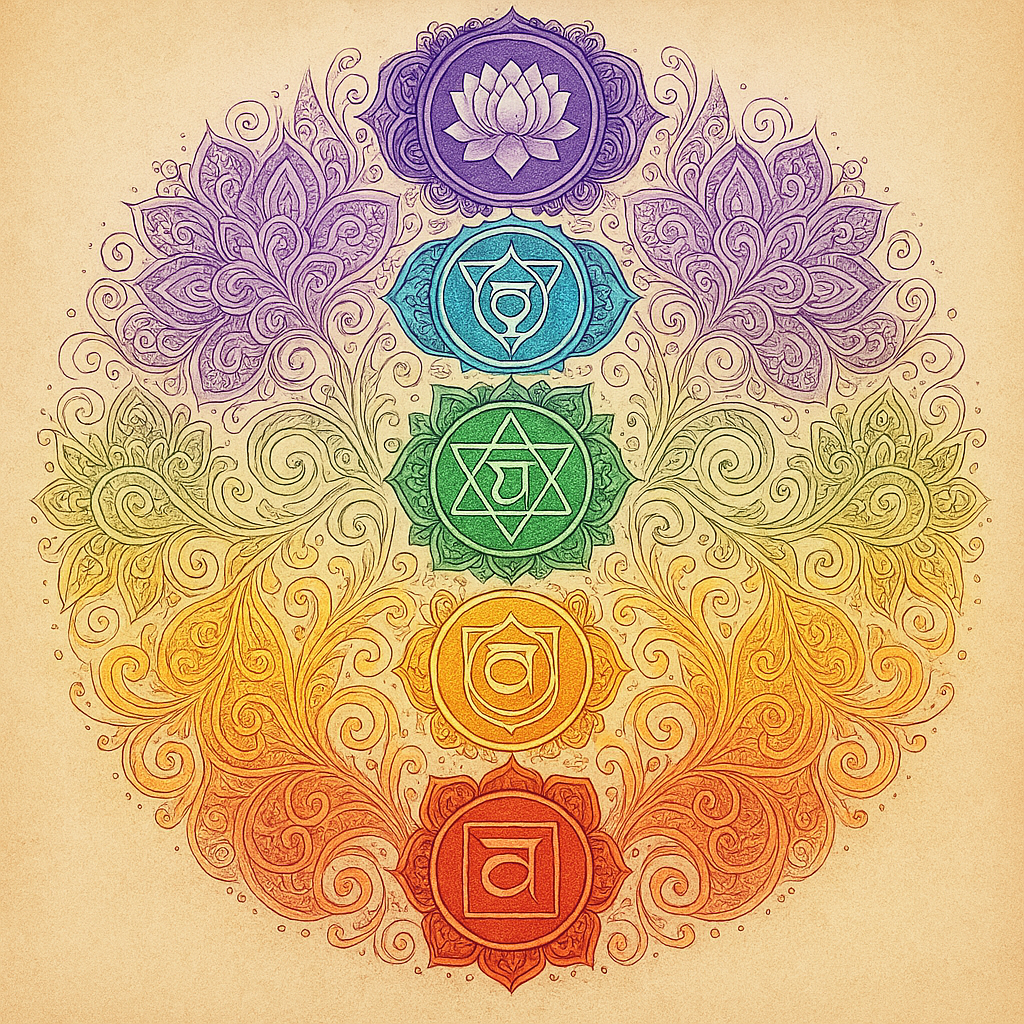
Introduction to Chakras and Their Energies
What Are Chakras?
Imagine your body as a superhighway of energy, and the chakras as the power stations along the route. Chakras are energy centers located along your spine, each one responsible for different physical, emotional, and spiritual functions. There are seven main chakras, and each one spins at its own frequency and radiates a specific color. Pretty cool, right?
The Role of Color in Chakra Healing
Color isn’t just for aesthetics. In chakra work, color plays a huge role. Each chakra vibrates at a specific frequency that aligns with a particular color in the visible spectrum. So, using that color in your daily life—whether through meditation, clothing, or environment—can help align and balance your energy centers.
The Seven Main Chakras and Their Corresponding Colors
Let’s dive into each chakra and explore the color it’s tied to and why it matters.
Root Chakra (Muladhara)
Location and Purpose
Base of the spine
Linked to safety, survival, and grounding
Associated Color: Red
Red is a powerful, primal color. It represents life force, strength, and stability. If you’re feeling ungrounded or anxious, focusing on red can help anchor your energy.
Sacral Chakra (Svadhisthana)
Location and Purpose
Lower abdomen, just below the navel
Governs creativity, sensuality, and emotion
Associated Color: Orange
Orange is the color of pleasure and play. It’s vibrant and full of life—exactly what this chakra needs to flourish.
Solar Plexus Chakra (Manipura)
Location and Purpose
Upper abdomen, around the stomach
Responsible for confidence, self-esteem, and personal power
Associated Color: Yellow
Yellow = sunshine = happiness. This color helps ignite your inner fire and confidence when you’re feeling dim or unsure.
Heart Chakra (Anahata)
Location and Purpose
Center of the chest
The bridge between earthly and spiritual chakras; rules love and compassion
Associated Color: Green (and Pink)
Green is the main color here, symbolizing healing and growth. Pink can also resonate with this chakra, representing unconditional love.
Throat Chakra (Vishuddha)
Location and Purpose
Throat
Governs communication and self-expression
Associated Color: Blue
Think of blue skies and calm seas. Blue helps open up the throat chakra, allowing truth and clarity to flow freely.
Third Eye Chakra (Ajna)
Location and Purpose
Between the eyebrows
Connects to intuition, insight, and mental clarity
Associated Color: Indigo
Indigo is deep, mysterious, and wise. It enhances your ability to see beyond the physical—your gut instincts, dreams, and inner wisdom.
Crown Chakra (Sahasrara)
Location and Purpose
Top of the head
Represents your connection to the divine, higher self, and universal consciousness
Associated Color: Violet (and White)
Violet is spiritual and reflective. Some see this chakra radiating white light, representing purity and enlightenment.
Why Chakra Colors Matter
The Psychology of Color in Spiritual Practice
Colors affect us more than we realize. Just like blue can make you feel calm or red can make you feel energized, chakra colors influence the energy flow in your body. The right color can stimulate or soothe, activate or balance.
Chakra Color Imbalances
When your chakras are out of whack, their colors can become dull, too intense, or even reversed. For example, an overactive root chakra may manifest as aggression, while an underactive one may leave you feeling insecure.
How to Use Colors to Balance Your Chakras
Color Meditation
Picture the color of a specific chakra as a glowing ball of light. Visualize it spinning and expanding, cleansing the area. This simple practice can be incredibly powerful.
Wearing Chakra Colors
Your wardrobe can be your healing tool. Need a confidence boost? Throw on something yellow for your solar plexus. Want to express yourself better? Blue accessories can help open your throat chakra.
Surrounding Yourself with the Right Colors
Change your phone wallpaper, paint a wall, or buy a few crystals in the chakra color you want to activate. Small changes in your space can create big energy shifts.
Additional Tools for Chakra Healing
Crystals and Gemstones
Pair each chakra color with its matching crystal:
Red: Red Jasper
Orange: Carnelian
Yellow: Citrine
Green/Pink: Rose Quartz, Green Aventurine
Blue: Lapis Lazuli, Aquamarine
Indigo: Amethyst
Violet/White: Clear Quartz, Selenite
Foods That Support Chakra Colors
Eat the rainbow—literally.
Red: Beets, apples
Orange: Oranges, carrots
Yellow: Bananas, corn
Green: Leafy greens, avocados
Blue/Indigo: Blueberries, eggplant
Violet/White: Purple cabbage, cauliflower
Aromatherapy and Color Association
Essential oils can enhance chakra work:
Root: Cedarwood
Sacral: Ylang Ylang
Solar Plexus: Lemon
Heart: Rose
Throat: Peppermint
Third Eye: Frankincense
Crown: Lavender
Conclusion
Chakra colors aren’t just pretty—they’re practical. By understanding and working with these colors, you can bring more balance, peace, and power into your life. Whether you’re meditating with crystals, eating color-rich foods, or just wearing a specific shade to boost your mood, you’re tapping into something ancient and incredibly healing. So go ahead—embrace your inner rainbow.
FAQs
You might feel emotionally or physically off. For example, an unbalanced throat chakra might lead to sore throats or trouble expressing yourself.




